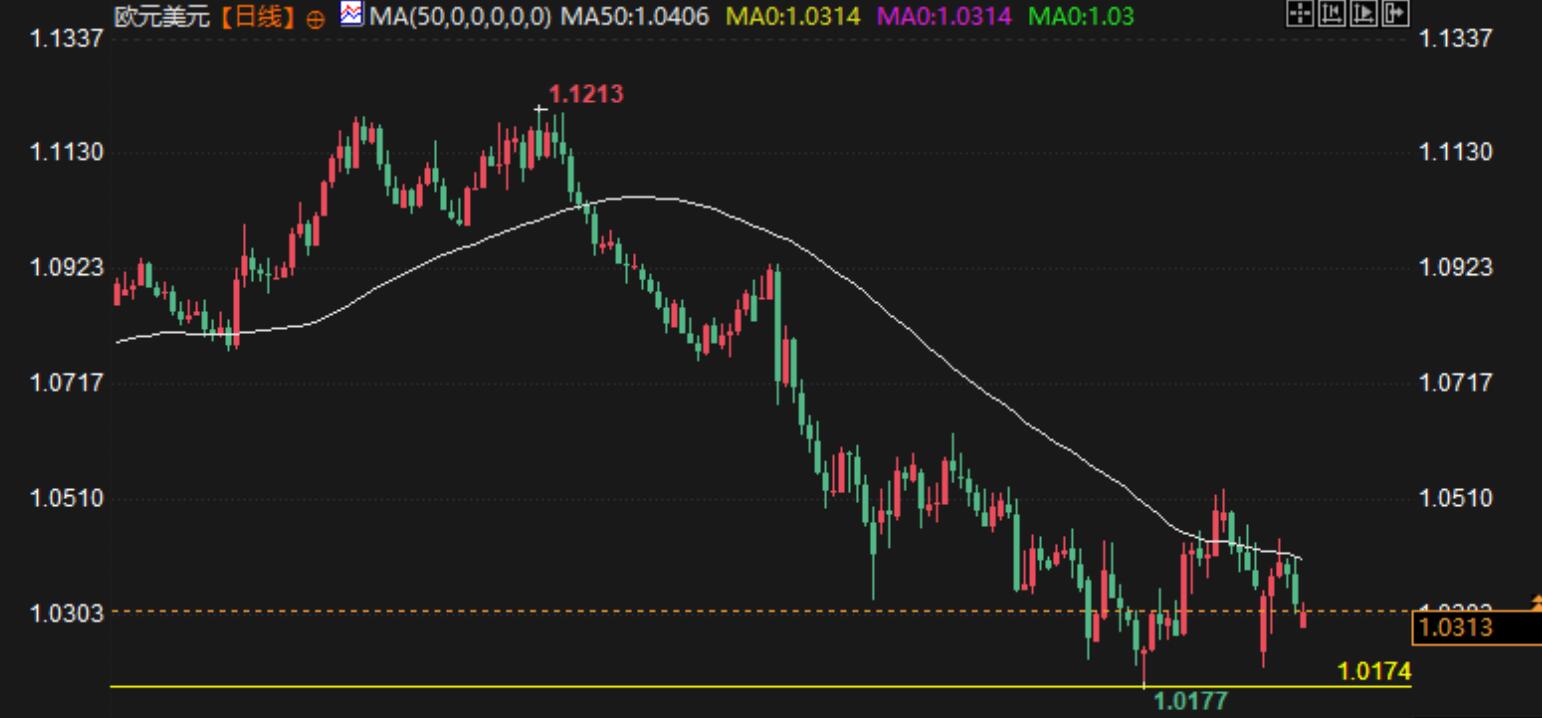Forex Trading Analysis: Key Offensive and Defensive Battle of EUR/USD
On Monday (February 10th), the euro against the US dollar rebounded above 1.0300 during the European trading session, after briefly opening lower at 1.0280 due to US President Trump's tariff comments. The market's risk aversion sentiment has risen, and the US dollar index (DXY) rose 0.15% during trading, reaching 108.25, but some of the gains were later given up.
The market is paying attention to the key events of this week, including the speech of European Central Bank (ECB) President Lagarde in the European Parliament on Monday, as well as the congressional testimony of Federal Reserve President Powell on Tuesday and Wednesday. It is expected that these events will affect market expectations for the euro and the US dollar and may trigger exchange rate volatility.
Tariff rhetoric puts pressure on the euro, and trade tensions between Europe and the United States are likely to escalate
Trump's proposal to impose a 25% tariff on all aluminum and steel imports has sparked widespread market attention. Although Canada is the most affected country, the eurozone may face a more complex situation. The EU currently imposes a 10% tariff on US car imports, while the US only imposes a 2.5% tariff on European car imports. Trump has repeatedly criticized the EU's tariff policy as unfair. If the Trump administration takes further reciprocal tariff measures, the trade friction between Europe and the United States may intensify, thereby putting additional pressure on the euro.
Organic organizations warn that the US tariff policy may become a catalyst to hit the Eurozone economy, especially considering that the Eurozone economy is already facing issues of slowing growth and sustained inflation below the 2% target. If the trade tensions between Europe and the United States escalate, it may affect the market's expectations for the future policy path of the European Central Bank, thereby affecting the trend of the euro.
Federal Reserve policy expectations support the US dollar
The recent strong performance of the US dollar is partly attributed to the market's expectation of the Federal Reserve keeping interest rates unchanged. The latest data shows that the non farm payroll in the United States increased by 143000 in January, lower than the revised 307000 last month, but the previous upward adjustment of data indicates that the job market still has resilience. At the same time, the US unemployment rate dropped to 4%, and average hourly wages increased by 0.5% month on month and 4.1% year-on-year, indicating that wage growth remains strong, which may strengthen the Federal Reserve's "wait-and-see" stance.
Some analysts believe that the Federal Reserve may maintain interest rates at 4.25% -4.50% for the entire year of 2025, following market expectations of a 25 basis point rate cut in March or May of this year. If the Federal Reserve insists on maintaining high interest rates, the US dollar may receive further support, which could put pressure on the euro.
The next focus of the market will be the US January CPI data released on Wednesday. If the inflation data is stronger than expected, it will strengthen the Federal Reserve's stance on maintaining high interest rates, further pushing up the US dollar and suppressing the euro. In addition, the testimony of Federal Reserve Chairman Powell in Congress may also affect the market's bets on future monetary policy.
Technical Trend Analysis of EUR/USD
Technically speaking, the EUR/USD exchange rate is currently trading around 1.0300, but the overall trend is still weak. Last week, the currency pair was blocked from falling near the 50 day moving average (EMA) 1.0436, indicating that bears are still dominant.
The Relative Strength Index (RSI) is hovering in the range of 40.00-60.00, indicating that the EUR/USD may maintain a sideways consolidation in the short term. The support level below is focused on the January 13th low of 1.0177. If it falls below this level, it may further test the 1.0100 integer level. Pay attention to the psychological barrier of 1.0500 when encountering resistance above. If it breaks through, it may alleviate short-term downward pressure.

Future prospects
This week, the trend of the euro against the US dollar will mainly depend on the speech of European Central Bank President Lagarde, US CPI data, and the testimony of Federal Reserve Chairman Powell. If the economic outlook for the eurozone further deteriorates, or if the Federal Reserve continues to release hawkish signals, the euro may come under pressure to decline. In the short term, the gains and losses at the 1.0300 level will become the focus of market attention.
Tips:This page came from Internet, which is not standing for FXCUE opinions of this website.
Statement:Contact us if the content violates the law or your rights
